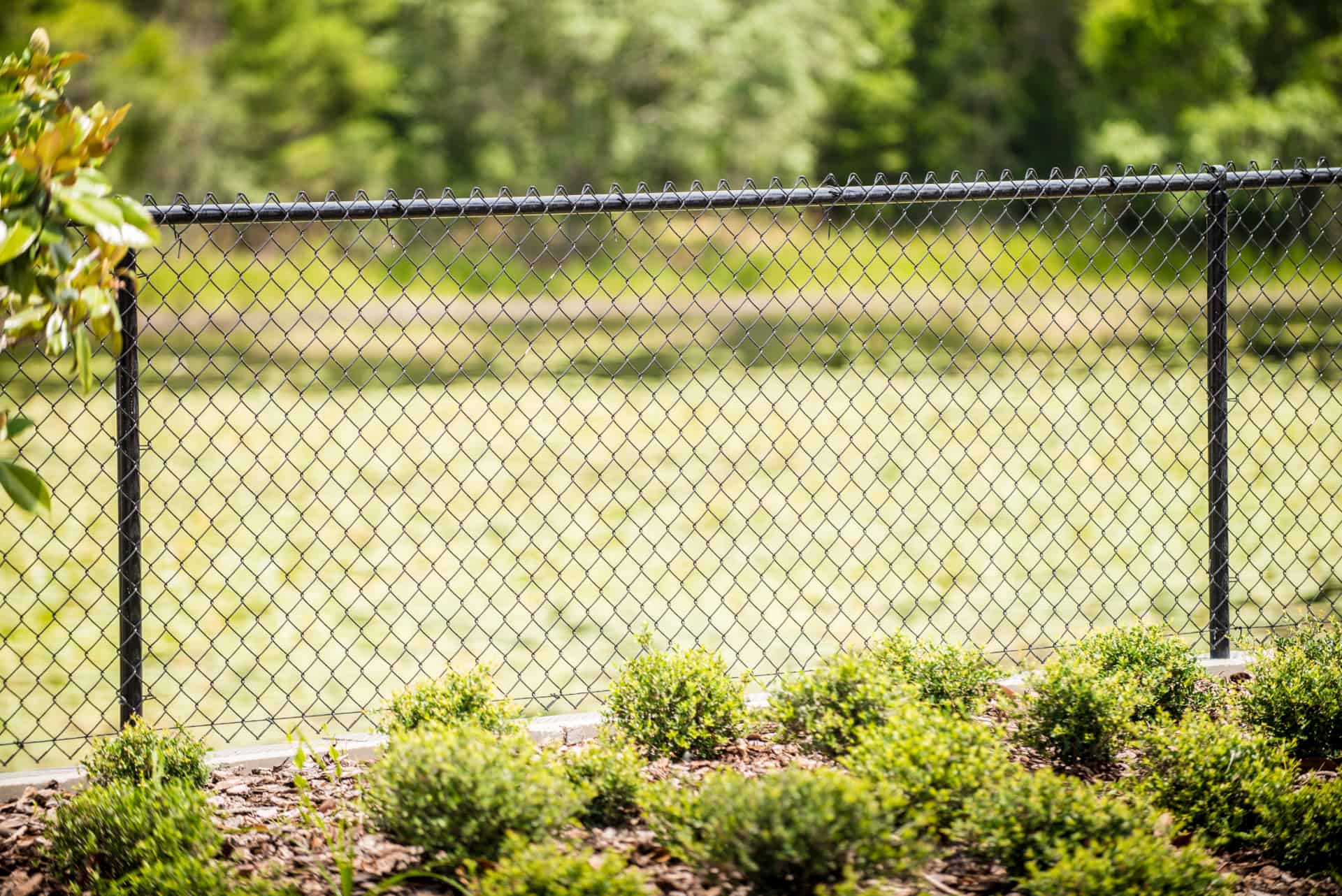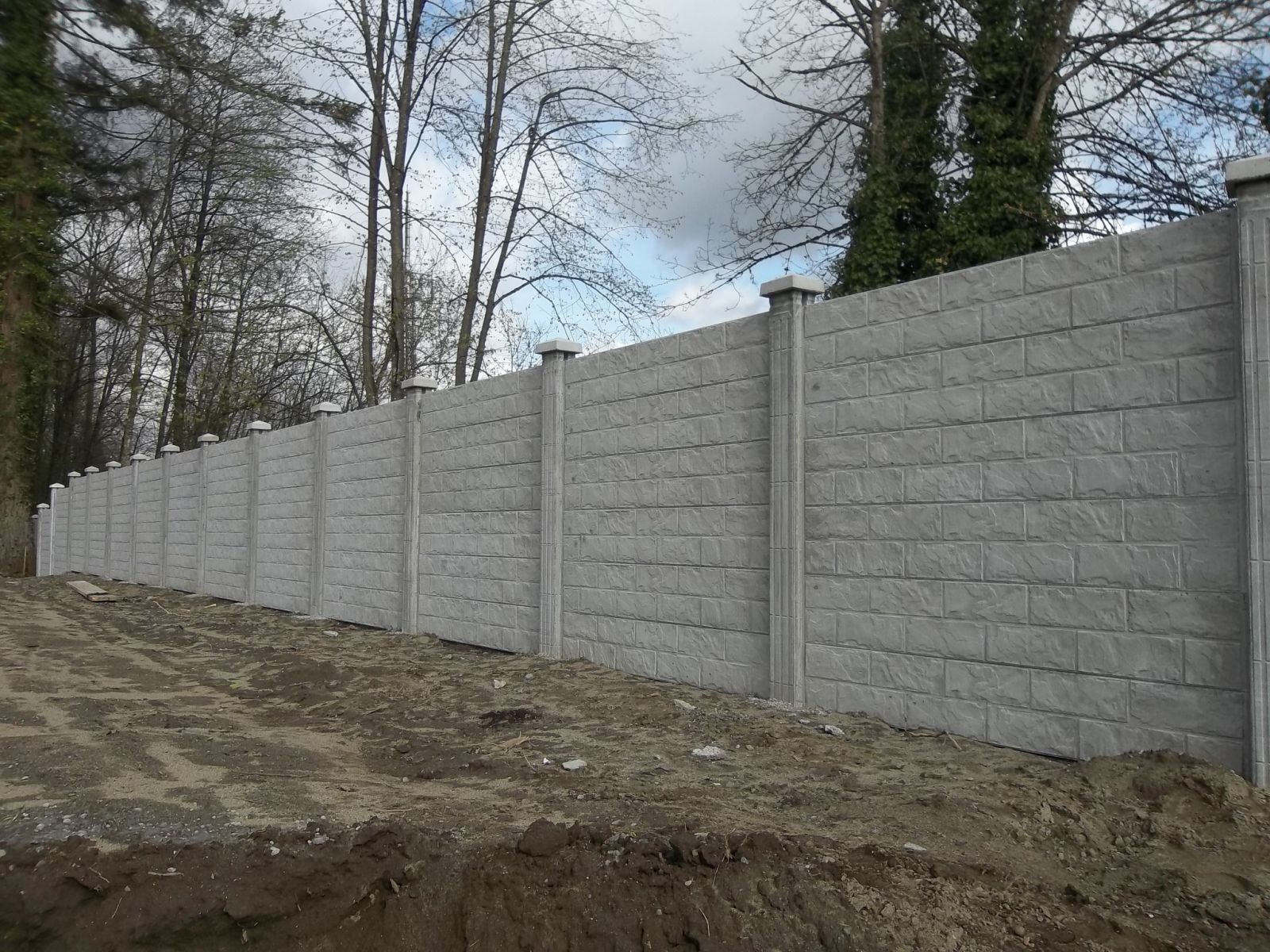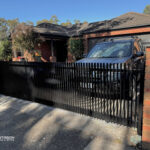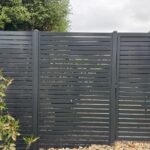When it comes to installing a fence, one of the most critical factors to consider is how well it can withstand the elements, particularly strong winds. Whether you’re living in a coastal area prone to gusty conditions or in regions where storms are frequent, having a fence that remains firm during high winds is essential for the longevity of the structure and the safety of your property.
Fences serve as more than just a boundary; they provide privacy, security, and aesthetic value. However, when strong winds hit, poorly constructed or unsuitable fences can collapse, causing potential damage and costly repairs. This article explores the best fence types that stay firm during strong winds, ensuring your property remains protected.
1. Colorbond Steel Fencing

Colorbond steel fencing is one of the most durable and popular choices for areas prone to high winds. Made from galvanized steel with a protective painted layer, Colorbond fences are designed to withstand the harshest weather conditions.
Why Colorbond Steel Fencing?
- Strength and Durability: Colorbond steel is incredibly strong and resilient, making it ideal for areas with frequent wind storms. Its solid construction helps it resist high winds better than more lightweight materials.
- Wind Resistance: With no gaps between panels, Colorbond steel provides a continuous barrier that prevents wind from passing through, reducing the risk of wind damage. Its solid nature allows it to hold up better in extreme conditions.
- Low Maintenance: Colorbond fences do not rot, rust, or require repainting, even after exposure to strong winds, rain, or UV rays.
- Noise Reduction: Its solid construction can also help reduce noise pollution, a bonus for homes in windy or urban areas.
- Design Flexibility: Colorbond steel comes in various colors and styles, allowing you to customize the fence to suit your property’s design.
Potential Drawbacks:
- Cost: While Colorbond steel is an excellent investment due to its durability, it tends to be more expensive upfront than some other fencing options. However, its low maintenance and long lifespan make it cost-effective in the long run.
- Industrial Look: Some homeowners may find the industrial aesthetic of steel less appealing compared to natural materials like wood or stone.
2. Aluminium Fencing

Aluminium fencing is another strong and durable option that performs well under high wind conditions. It combines lightweight construction with excellent corrosion resistance, making it perfect for coastal regions and areas with variable weather.
Why Aluminium Fencing?
- Wind Resistance: Aluminium fences are designed to handle strong winds by allowing airflow through the gaps in the fence. This reduces the pressure on the structure, unlike solid barriers that block wind and can easily topple.
- Durability: Aluminium is naturally resistant to rust and corrosion, which is essential for maintaining strength in areas with high moisture or coastal winds. It can also withstand the damaging effects of UV exposure without fading or warping.
- Lightweight but Strong: While lightweight, aluminium fences are surprisingly strong and can endure significant wind force without bending or breaking.
- Low Maintenance: Like Colorbond steel, aluminium requires minimal upkeep. It won’t rot or need repainting, and it’s easy to clean.
- Customizable: Aluminium fences are available in various designs, from simple vertical slats to ornate styles. They can be powder-coated in various colors to match the look of your property.
Potential Drawbacks:
- Less Privacy: Aluminium fences often feature gaps between slats or pickets, offering less privacy compared to solid fences.
- Moderate Strength: While durable, aluminium is not as strong as Colorbond steel and may bend under extreme wind conditions or impact.
3. Timber Fencing (With Wind Gaps)

Timber fencing is a classic and attractive option for many homeowners. However, when it comes to standing firm in high winds, not all timber fences are created equal. A solid timber fence may be vulnerable to strong gusts, as wind pressure can build up and push the fence over. The solution is to install timber fences with wind gaps, also known as louvre or slatted designs, which allow wind to pass through rather than hit the fence like a sail.
Why Timber Fencing with Wind Gaps?
- Wind Flow: The gaps between the slats reduce the wind pressure on the fence, allowing wind to pass through without exerting too much force on the structure.
- Natural Aesthetic: Timber fences have a warm, natural look that many homeowners find appealing. They can be customized with different stains or paints to match the aesthetic of your property.
- Cost-Effective: Timber fencing, especially treated pine, can be an affordable option. It’s widely available and relatively easy to install.
- Environmental Friendliness: If sourced from sustainable plantations, timber can be an eco-friendly fencing material.
Potential Drawbacks:
- Maintenance: Timber fencing requires regular maintenance, especially in windy and wet conditions. Wood needs to be treated to prevent rot, and you may need to repaint or reseal the fence every few years.
- Vulnerability to Weather: Even with wind gaps, timber fences can still suffer from warping, splitting, or rotting over time if not properly maintained.
4. Vinyl (PVC) Fencing

Vinyl fencing is a synthetic option that has grown in popularity due to its low maintenance and durability. While it may not seem as strong as metal or wood, vinyl can be surprisingly resilient in windy conditions when properly installed.
Why Vinyl Fencing?
- Flexibility and Strength: Vinyl fencing is flexible enough to withstand strong winds without cracking or breaking. Its resilience makes it ideal for areas with fluctuating weather conditions.
- Weather Resistance: Vinyl is highly resistant to moisture, making it impervious to rot, rust, or corrosion. This is especially beneficial for areas prone to wet or humid climates.
- Minimal Maintenance: Unlike wood, vinyl doesn’t need to be stained or treated. It also won’t fade, peel, or warp under sun exposure, making it an excellent long-term investment.
- Design Versatility: Vinyl fences come in a wide range of colors and styles, including solid privacy fences, which can offer more protection and wind resistance compared to open designs.
Potential Drawbacks:
- Cost: High-quality vinyl fencing can be more expensive than wood or other materials. However, the low maintenance costs may balance out the initial investment over time.
- Brittleness in Cold Weather: In very cold climates, vinyl can become brittle and more susceptible to cracking under pressure, though this is less of an issue in moderate climates.
5. Chain Link Fencing

Chain link fencing is an often overlooked but highly effective option for areas prone to high winds. While it doesn’t provide much privacy, it’s incredibly sturdy and flexible in strong wind conditions.
Why Chain Link Fencing?
- Wind Flow: Chain link fences are highly wind-resistant because their open design allows wind to pass through easily, reducing the strain on the structure.
- Durability: Made from galvanized or coated steel, chain link fences are resistant to rust and corrosion, making them ideal for regions with high moisture or salty air.
- Cost-Effective: Chain link fencing is one of the most affordable fencing options available. It’s also easy to install and repair, making it a great choice for budget-conscious homeowners.
- Low Maintenance: This type of fence requires little upkeep aside from occasional cleaning and rust protection, particularly in coastal areas.
Potential Drawbacks:
- Lack of Privacy: Chain link fences provide little to no privacy, which can be a downside for homeowners looking to shield their property from outside view.
- Aesthetic Appeal: While functional, chain link fences are not the most visually appealing option. However, they can be combined with plants or privacy slats to improve their appearance.
6. Concrete Fencing

For ultimate strength and wind resistance, concrete fencing is a top choice. Concrete fences are built to last and can withstand nearly any weather condition, including the most severe windstorms.
Why Concrete Fencing?
- Extreme Wind Resistance: Concrete is one of the most durable materials available for fencing. It’s heavy, solid, and capable of standing firm even in hurricane-strength winds.
- Security and Privacy: Concrete fences provide complete privacy and act as a solid barrier, making them ideal for homeowners looking for both protection from the elements and enhanced security.
- Minimal Maintenance: Once installed, concrete fences require very little maintenance. They are not susceptible to rot, rust, or warping, and they can last for decades with minimal care.
Potential Drawbacks:
- Cost: Concrete fencing can be expensive to install due to the cost of materials and labor. However, its longevity and minimal maintenance can make it a worthwhile investment in the long run.
- Installation Time: Concrete fences take longer to install than most other types of fencing due to the time required for curing and construction.
Conclusion
When it comes to selecting a fence that stays firm during strong winds, the key factors to consider are material strength, design, and wind resistance. Colorbond steel, aluminium, and concrete are among the most robust options, offering excellent durability and wind resistance. For those who prefer a more natural look, timber fencing with wind gaps or vinyl fencing can also perform well when properly maintained and installed.
Ultimately, the best fence for your property will depend on your specific needs, climate conditions, and budget. Whether you’re looking for maximum privacy, aesthetic appeal, or long-term durability, choosing a wind-resistant fence will ensure your property remains protected no matter what nature throws its way. If you’re unsure which fence type is right for your home, consider consulting with a professional fencing contractor who can guide you through the best options for your area.
Need help choosing the right fence for high winds? Contact us today for expert advice and a free consultation to keep your property safe and secure.




